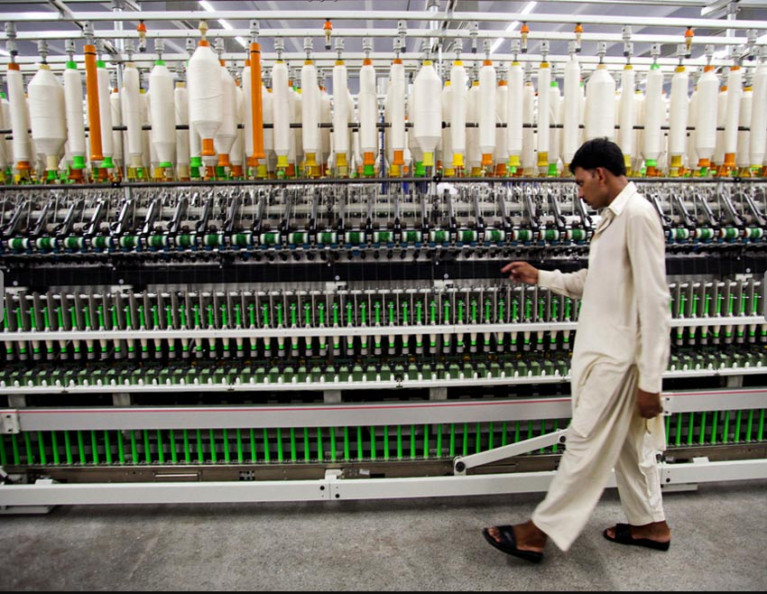KARACHI:
Textile industry – the single largest export earning sector of Pakistan – has scaled up productions to pre-Covid-19 level of full-capacity, as a significant improvement in containment of the pandemic in the country led the world buyers to partially divert their orders to domestic manufacturers.
The much-needed growth in textile production is, however, achieved through a big jump in the import of basic raw materials – cotton and man-made yarn – after the recent heavy rainfall and pest attack damaged notable portion of cotton crops in the fields to a multi-year low.
The share of textile in annual export earnings stands at 60%.
"Textile industry has revived to pre-Covid-19 level, as precautionary measures to safeguard people from the virus and industry-specific economic measures by the government have helped at length to resume production to full capacity," All Pakistan Textile Mills Association (Apmta) former vice-chairman Asif Inam said while talking to The Express Tribune.
He elaborated that the full-capacity production is excluding those textile units which closed down during the crisis. They are few in number and are trying to return to work gradually. However, the number of the affected units remained unknown, he said.
Overall, Pakistan's textile industry is operating exceptionally, in a much better position compared to regional competitors as well. There are world buyers who have diverted their orders to Pakistan from China, India and Bangladesh for different reasons including US-China trade war and halt in production in India with worsening of Covid-19 crisis there.
The number of export orders may increase in the time to come with recovery from the pandemic in export countries and regions, including the US and Europe. They are fighting against the second wave of the pandemic, while some of them have again imposed lockdowns to deal with the situation at present.
Secondly, the industry recovered on a fast pace with the government's support in the shape of rationalising energy price to a regional competitive level, the continued supply of raw material and subsidised financing for the expansion of production and setting up new units.
"All these were the long pending demands of the industry to become competitive at the regional and international level. We had put such demands in front of several previous governments time and again, but this government has kept its words and delivered to the industry," Inam added.
"I hope the government will continue to support the industry…to achieve the next milestone of going on expansion," he said. "The government should extend the deadline for setting up new textile units on subsidised interest rates for one year, as it expires in March 2021.”
“There are many industrialists considering expansion in production with an increase in export orders.”
Cotton production, import
Pakistan has to import five million bales (of 225 kilograms each), which comes equal to estimated local production of eight million bales (of 150 kilograms each) this year, imports are estimated to cost around $1.8 billion.
This is a huge task. “We have just started the imports after coming out of the challenging times under Covid-19. But we are compelled to import cotton after local production remained sluggish for another year," he said.
Pakistan saw a jump of almost 1,000% in import of cotton in dollar-term at $67.43 million in August compared to $6.30 million in the same month of last year, according to the Pakistan Bureau of Statistics (PBS).
The import of cotton surged 255% in the first two months (July-August) of the current fiscal year 2021.
Pakistan Cotton Ginners Association (PCGA) former chairman Dr Jassu Mal Leemani said the recent heavy rainfall has damaged 200,000-300,000 bales in Sindh and another 300,000-400,000 bales damaged in Punjab due to pest and whitefly attack in Punjab.
Besides, farmers have sown cotton on the lower area this year due to non-availability of quality seeds for the past several years.
The cotton production is on a decline since Pakistan achieved record-high production around 15 million bales in 2015-16, he recalled.


